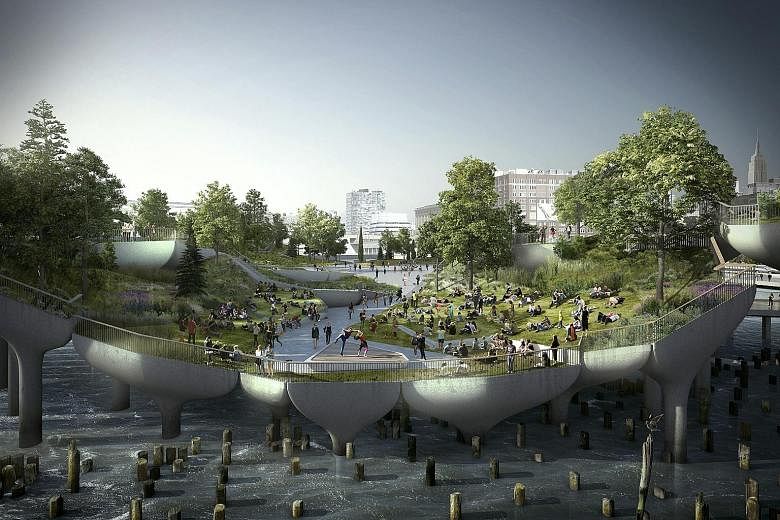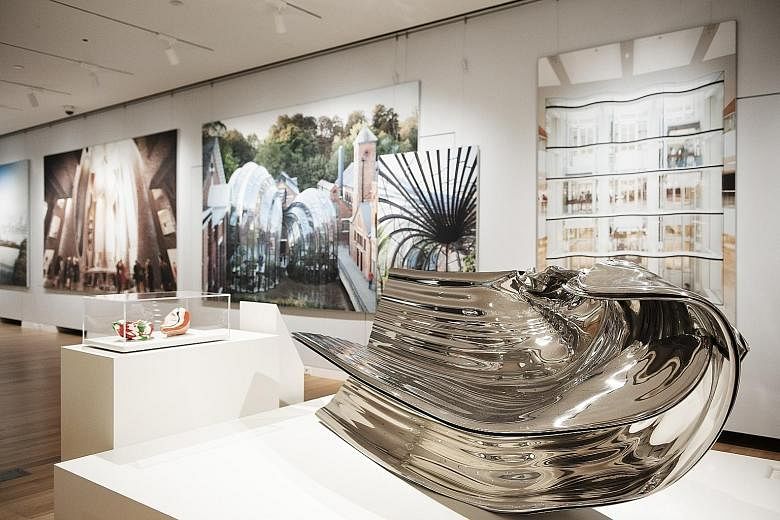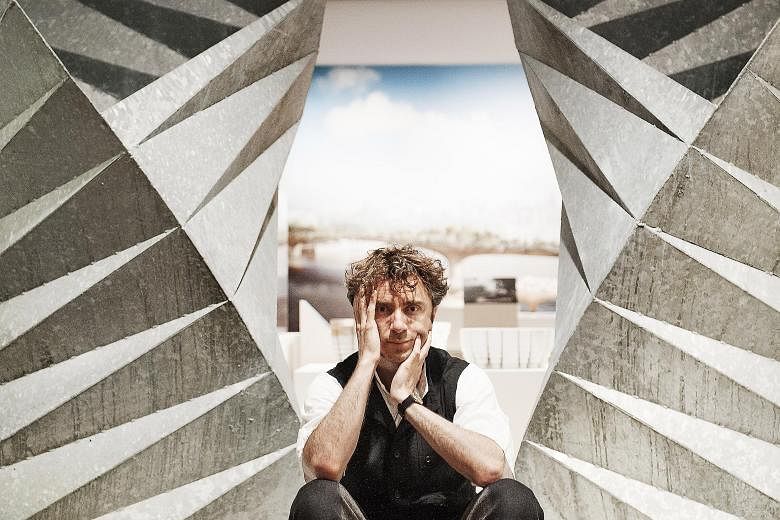NEW YORK • A tiny canal bridge in London does not just open for boat traffic, but it also curls up like a caterpillar. An exposition building in Shanghai is covered in what looks like porcupine quills. A pier in New York City on the Hudson is reimagined as a miniature island park with an amphitheatre nestled within Lilliputian hills.
All are the work of Mr Thomas Heatherwick, a polymath British designer of sculpture, furniture and architecture who leaps boundaries few artists and designers dare cross. Trained in art and design, he has applied his talent to handbags, piers and a newsstand made of paper.
"I was always interested in ideas and innovations," said Mr Heatherwick, a wiry 45-year-old whose face is framed by ringlets. He was interviewed in New York for the opening of his first major US exhibition, Provocations: The Architecture And Design of Heatherwick Studio. On till January next year, it fills the third-floor gallery of the Cooper Hewitt, Smithsonian Design Museum with models and photographs of some projects that have confounded expectations.
They include the popular British pavilion for Shanghai's 2010 World Expo, colloquially called the Seed Cathedral - the structure comprised 66,000 thin, waving acrylic "quills" into which were cast 250,000 seeds that had been collected worldwide.
Another work was a cauldron for London's 2012 Olympics that drew together 204 flaming petals.
Those cemented his reputation as one who could pull a crowd-pleasing architectural rabbit out of a hat.
That has brought him large public projects he and his clients think will transform neighbourhoods and cities. Rich companies hope the Heatherwick allure will melt scepticism about projects that appear to advance their patrons' agendas, especially when they involve public funds.
His latest project for the Hudson Yards on the Far West Side of Manhattan, New York City, may become a new city landmark.
Apparently, the design envisioned a "vessel" that could occupy a large part of the plaza, shot through with dozens of stairways. Shaped like a chalice, it would rise higher than the adjacent Culture Shed, the 30m- high international arts centre also planned for Hudson Yards.
The Hudson Yards project comes after Mr Heatherwick thrust himself into the contentious politics and faltering finances of Hudson River Park when he was named, in 2012, to design a replacement for the crumbling Pier 54. He proposed a 1ha park island, called Pier 55, atop pilings capped with giant flower pots that would support an intricately picturesque landscape.
The Hudson River Park Trust plans to complete construction in 2018, but civic groups asked a court in June to halt construction until the project undergoes a new environmental review and is approved by the legislature.
Mr Heatherwick's London Garden Bridge design has come under similar criticism for seeking to add a US$272-million (S$376-million) Thames River crossing in a part of central London that is already packed with amenities. Almost 300 full-grown trees and 2,000 shrubs would sprout from the 365m-long span that proposes to link the South Bank just east of the national theatres to the Temple Tube stop on the northern embankment.
The man at the centre of these controversies has shown a relentless curiosity since childhood.
His grandmother was a textile designer, his mother a jewellery maker. A grandfather's home was filled with engineering books and gadgets. That wonder at the possibility of invention drives his projects.
No signature style is discernible among the 43 works at the Cooper Hewitt exhibition. "He's always looking for a way to create the unexpected out of the everyday," said Ms Brooke Hodge, the Cooper Hewitt's deputy director, who is behind the exhibition.
As his projects have grown larger and entangle private wealth with government financing, they present the public with a quandary: Should communities accept the unasked-for gift of a design perhaps more ambitious than what might result from limited public funds, developed in a public process?
Certainly, private philanthropy, allied with great art, design and architecture, has given most cities great landmarks, such as parks that were once private gardens.
With public participation now seen as necessary, how far should city officials push to achieve community goals when the gift's withdrawal is at risk?
The prodigious imagination of Mr Heatherwick does not make those decisions easy.
NEW YORK TIMES



